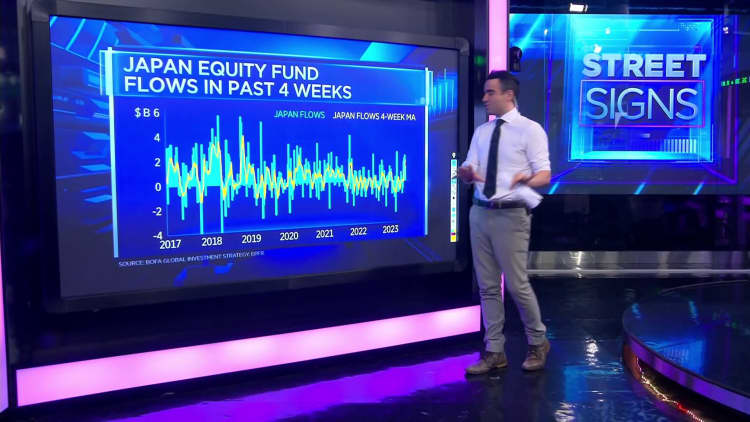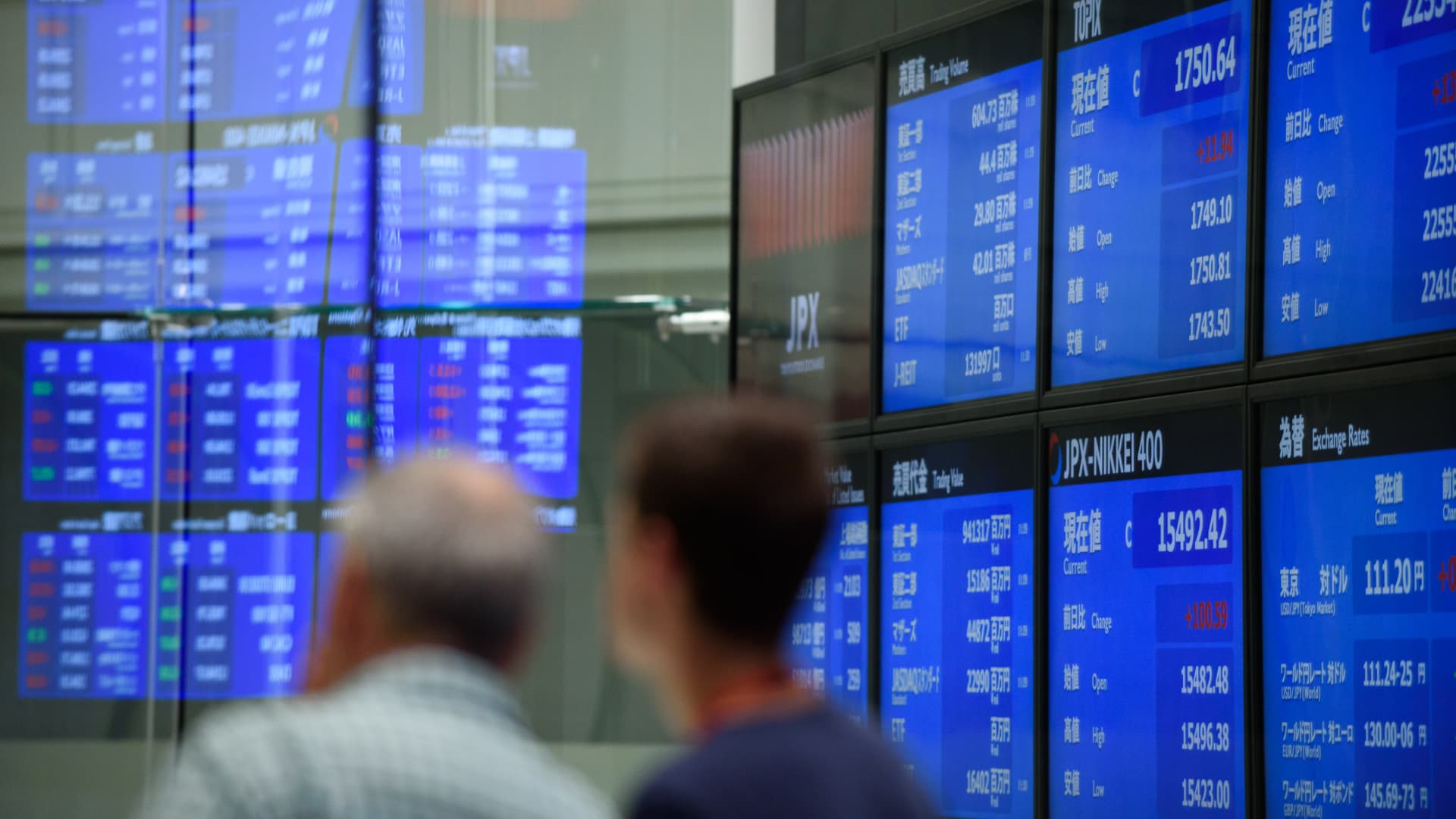Visitors look at a screen displaying stock indices at the Tokyo Stock Exchange in Tokyo, Japan, Tuesday, July 24, 2018.
Akio Chimi | Bloomberg | Getty Images
Market strategist Jesper Koll said Japan’s Nikkei 225 could reach 40,000 in the next 12 months as fundamentals “point in the right direction.”
His optimism about Japan also comes from a strong rebound in business confidence and supportive fiscal policy.
If the forecast comes true, it will mean the Nikkei will breach its all-time high of 38,195, set on December 29, 1989.
At the time, Japan was in the midst of a real estate bubble. When the real estate market collapsed, stock and land prices also plummeted, triggering a period of low economic growth in Japan that continues to this day.

Cole, expert director at financial services firm Monex Group, told CNBC’s “Squawk Box Asia” that aside from investor interest, “Japanese CEOs are now using retained earnings for the first time in 30 years to actually invest in people, invest in business .”
“I see no reason why we shouldn’t have (a) a target above 40,000 over the next 12 months,” he said on Monday.
The Bank of Japan has maintained an ultra-loose monetary policy for more than 20 years.
Asked whether his forecasts factored in expectations that the BOJ might tighten monetary policy, Cole said if the BOJ had no incentive to raise rates, “why would I change monetary policy just to change monetary policy?” Change monetary policy? It makes absolutely no sense. “
He believes that Bank of Japan Governor Kazuo Ueda has a “watch and wait” stance on the economic data released by Japan.
The most interesting thing to watch is next spring’s wage talks, he said, adding that it would show “whether the deflationary spell is broken and whether the Japanese chief executive is willing to invest in people and capital expenditure”.
Only then will the BOJ normalize interest rates, but “it will take at least six to nine months,” he said.

However, IG analyst Tony Sycamore takes a slightly different view from Koll.
While the Nikkei has more upside, “a lot of the good news has already been priced in,” he said.
With the Nikkei up 27% so far this year, he expects the rally to fluctuate between the 36,000 mark and an all-time high of 38,195 before stabilizing around 33,000 in 12 months. This is based on expectations that the Bank of Japan will adopt a tightening monetary policy.
For Sycamore, history also offers some insight.
“Remember, the last thing the BOJ wants to create is another asset bubble in Japan after it took three decades to recover from the last one,” he told CNBC.
However, Cole believes it will be “extremely difficult” to prove that Japanese assets are overvalued.
He pointed out that the price-to-earnings ratio in the Japanese market is 14 times, but half of the companies in the market are trading below book value.
While property prices are at their highest since the bubble, they are still affordable given current mortgage rates and wages, Cole said.
“So from that perspective, is there an asset bubble here that is creating social chaos that is causing unrest within the Japanese economy and Japanese society? The answer is absolutely no.”


